The 1953 Plymouth was sleek, straighter, and more modern than its predecessors. The car seemed stubby and tall although “long and low” were the most selling cars at the time. The 1953 wheelbase set at 114 inches, which was less than halfway between the 111 “short wheelbase and 118.5” long-wheelbase designs produced previously. It was only one inch short compared to Chevrolet and Ford. Plymouth came up with new styling, featuring “Flow-Thru” fenders. The rear quarter panels were of one piece curved unit.
Vestiges of different rear fenders were not changed but remained in the form of ‘pontoon’ extensions from the front of the wheel to the back of the car forming a valence below the trunk lid. The lead edge of pontoons was left bear for the 1953s, covered with rubber for 54s, and on the higher trim covered with bright molding for the two years. All the 1953 cars contained the P-24 design, unlike previous years. With the lower price, Cambridge line listed as P-24-1, while Cranbrook line with higher trim listed P-24-2. The lowest price was the Cambridge business coupe which was without a back seat, although you could order a removable one at $64.50 for a family holiday. Club Sedan, a two-door model had a longer roofline and rear quarter windows.
The Plymouth wagons were still produced as a two-door design introduced in 1949 as the industry’s first all-steel station wagon. The Cambridge wagon still retained the name Suburban while the deluxe Cranbrook model was given the name Savoy for higher trimmed wagon since 1951. Consumers gave this wagon a higher rating because it was low priced with a sealed spare tire that could not leak if the cargo compartment was hosed out. Savoy could be ordered as a hardtop, the Cranbrook Belvedere. In 1954, Plymouths reputation was recovering for providing solid and reliable transportation. Power was changed to a V-8 engine, painting, and upholstery. Hy-style was in and bright and vivid colors replaced the prosaic blues and grays.
